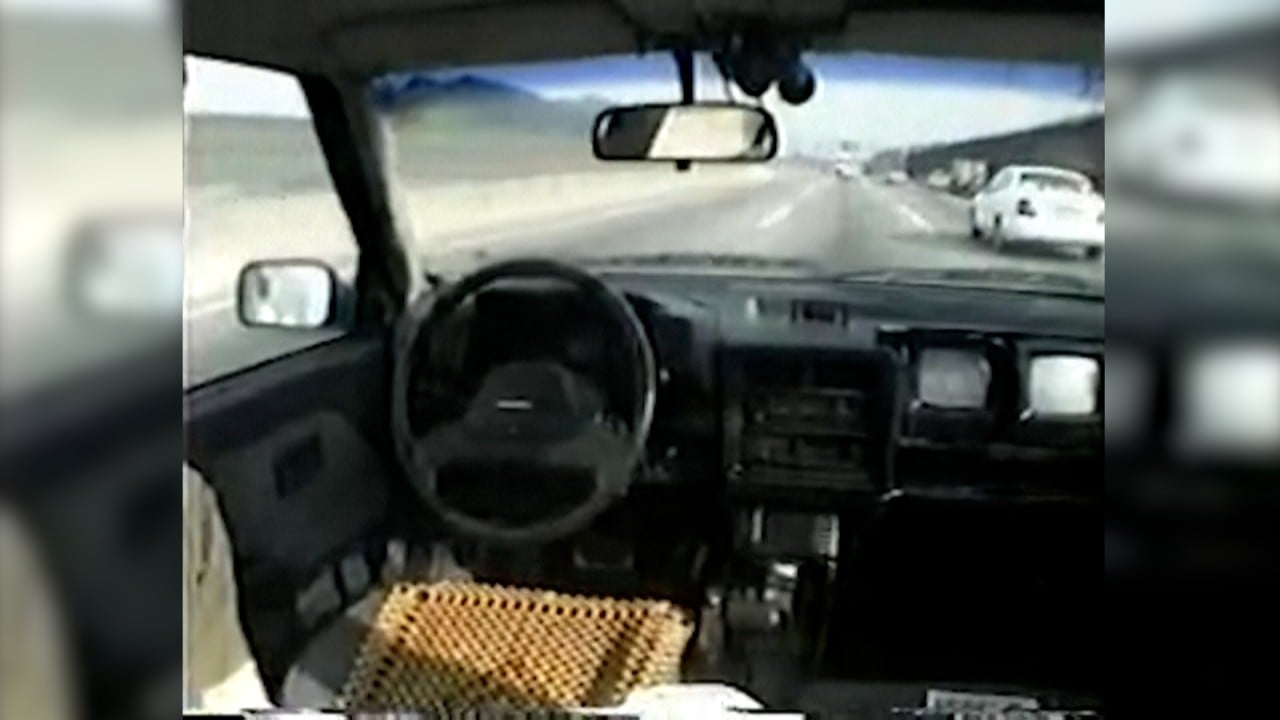
China rolls out autonomous driving standards as carmakers work towards making self-driving a reality
- China provides official definitions for self-driving cars from L0, which relies largely on human drivers, to L5 that achieves full driving automation
- Drafted by 11 major carmakers and suppliers, the standards will come into effect in March 2022
China has published its first national standards for grading autonomous driving, which will come into force in March, providing a benchmark for carmakers to develop the futuristic technology.
China’s six-level standards, called “Taxonomy of Driving Automation for Vehicles”, provides official definitions for self-driving cars from level zero (L0), which relies largely on human drivers, to L5 that achieves “full driving automation”.
Before its introduction, local carmakers used the United States-based Society of Automotive Engineers’ (SAE) definition. While it is similar to the Chinese version, the mainland standards give technology a slightly larger role, experts said.
The new criteria “provides a strong foundation for the future launch of relevant laws, regulations and mandatory classifications and a prerequisite for autonomous driving technology to commercialise its implementation on a large scale,” said Wang Zhenbo, analyst at automotive industry consultancy WAYS Information Technology.

02:18
Chinese XPeng electric car can drive and park by itself
The levels are determined by the degree of autonomous driving technology involved in steering, braking and accelerating under certain conditions. At the highest level, the technology takes full control and can drive the vehicle anywhere under all road conditions.
It was drafted by 11 major carmakers and suppliers, including Ford, BMW and Volkswagen’s China units as well as some domestic giants like Geely and GAC Group, and the Ministry of Industry and Information Technology (MIIT) will oversee its adoption. Last year, the MIIT published the draft standards, and state-broadcaster CCTV reported that it would take effect in January this year. However, its implementation was delayed without any explanation.
The State Administration for Market Regulation, which supervises the standardisation administration, did not immediately reply to a faxed request for comment.
While not mandatory, the taxonomy is a recommended standard that authorities hope self-driving car companies will voluntarily adopt.
The SAE rolled out its classification in 2014 and updated it several times since. It also has a six-level rating based on the engagement of human drivers and automation.
Although both standards have the same number of levels, “the Chinese version puts more emphasis on technological input”, said Chen Jian, auto analyst at research firm Analysys.
For example, China’s L0, L1 and L2 levels require that the driver and the autonomous driving system work together on detecting and responding to objects and events while the SAE version only requires drivers to perform the tasks for these levels.

02:06
Back to the future: South Korean professor’s self-driving car was decades ahead of the curve
“Secondly, the Chinese taxonomy offers a definition for ‘remote driver’, which isn’t covered by the SAE,” Chen said. According to the document, a remote driver refers to anyone able to operate the car without touching the steering wheel or brakes, no matter if they are inside or outside the car.
Currently available mass-produced passenger cars “are capable of L2, but L3 is still in the stage of being tested”, Chen said.
L3 is known as “conditional driving automation” under the Chinese taxonomy, because levels below that require driver’s engagement and are not considered automation, but assisting features.
It is viewed as the beginning of true self-driving because it requires the autonomous system to continually detect and respond to objects and events, control the lateral and longitudinal motion of the car under predetermined working conditions, and alert the human driver to take over if the system spots a malfunction.
L3 is commonly seen as a “hands-off” feature while L4 allows drivers to be “eyes-off”. At L5, they can even take their “mind off” of driving.
However, experts say that even achieving L3 on public roads is some time away and will take a large amount of money.
“Even if L3 is achieved, the cost will increase steeply, making it harder to commercialise [the technology],” Chen said.

03:06
China’s self-driving RoboTaxi hits the road
Nevertheless, self-driving car companies are in a race to make L4 and L5 a reality, but the technology is still in the experimental stage. Tesla founder Elon Musk said in July last year that he was confident that Tesla “will have the basic functionality for level 5 autonomous driving complete” in 2020.
However, the EV maker admitted to the California Department of Motor Vehicles that it “does not match engineering reality … Tesla is at level 2 currently”, according to memo released by legal transparency group PlainSite.
In September 2020, Chinese internet giant Baidu rolled out an L4 autonomous bus in partnership with bus maker King Long. Intel’s car developer Mobileye and Chinese electric-vehicle maker NIO partnered in 2019 to build L4 cars for consumers in China and other major regions.

